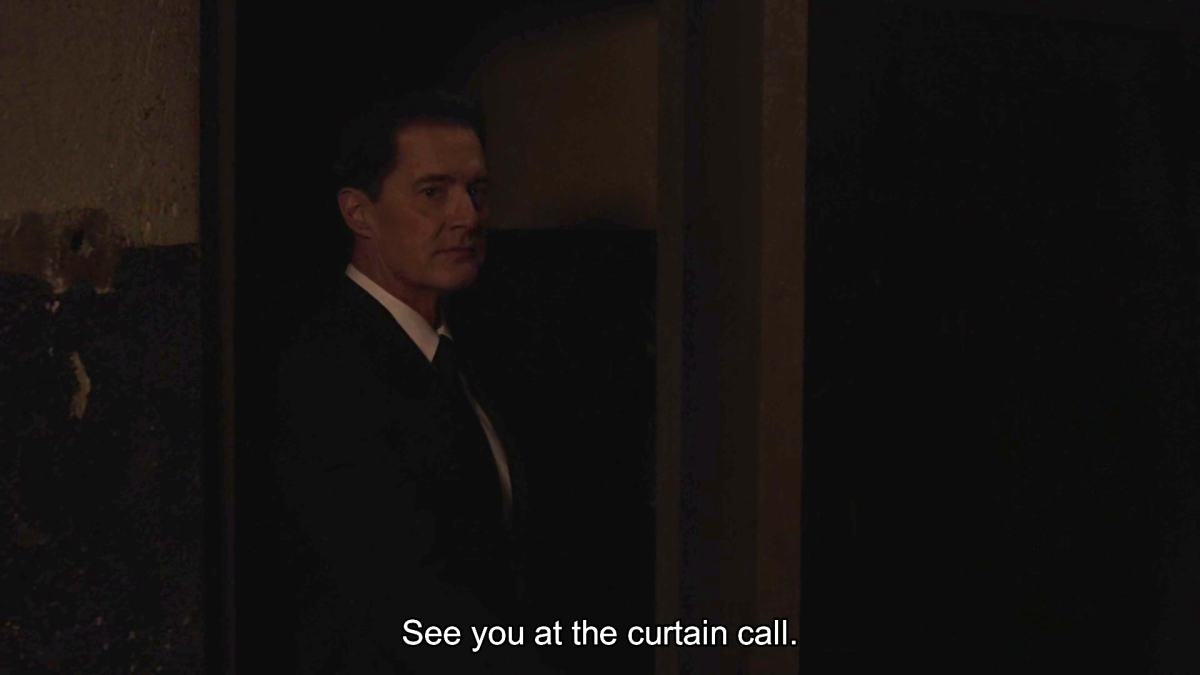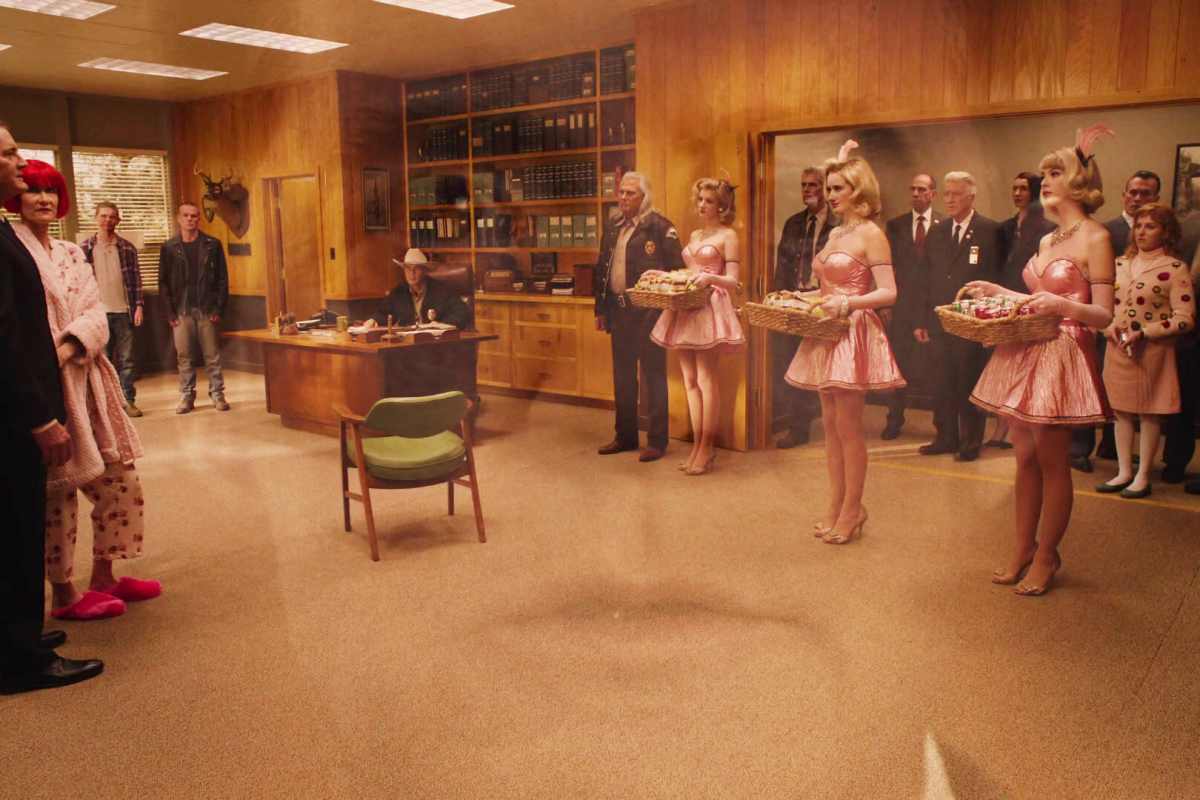I believe it’s possible to write about episode 17 as the last episode of season 3. Of course, it is followed by episode 18 and once it’s finished, we are still one hour away from the real end of the season. Nevertheless, the various story arcs initiated a few months ago really come to an end (of sorts) with this episode. Episode 18 takes us somewhere/when else entirely. The fact that this conclusion to season 3 was compressed in one episode might explain the frustration felt by some of the viewers. It might have felt a bit rushed, getting rid of all these characters with whom we had started to develop a relationship, especially after having spent so much time in their company during the past 16 episodes. The final battle against BOB also felt slightly unsatisfactory, but perhaps it was meant to feel that way. In a sense, the overall meaning of this episode might have been that it was time to move on to bigger issues. To Judy, for instance.
Before moving on to the content of the episode itself, I’d like to come back briefly to the superimpositions in the opening credits that I have been writing about during the past several weeks. I now believe I have found the moment(s) depicted in the rocks/forest seen from a drone during the opening credits and they come from this very episode. It is actually a composite image of the woodsmen massaging Mr. C after he got shot by Lucy and of Cooper walking towards the body of his doppelgänger.
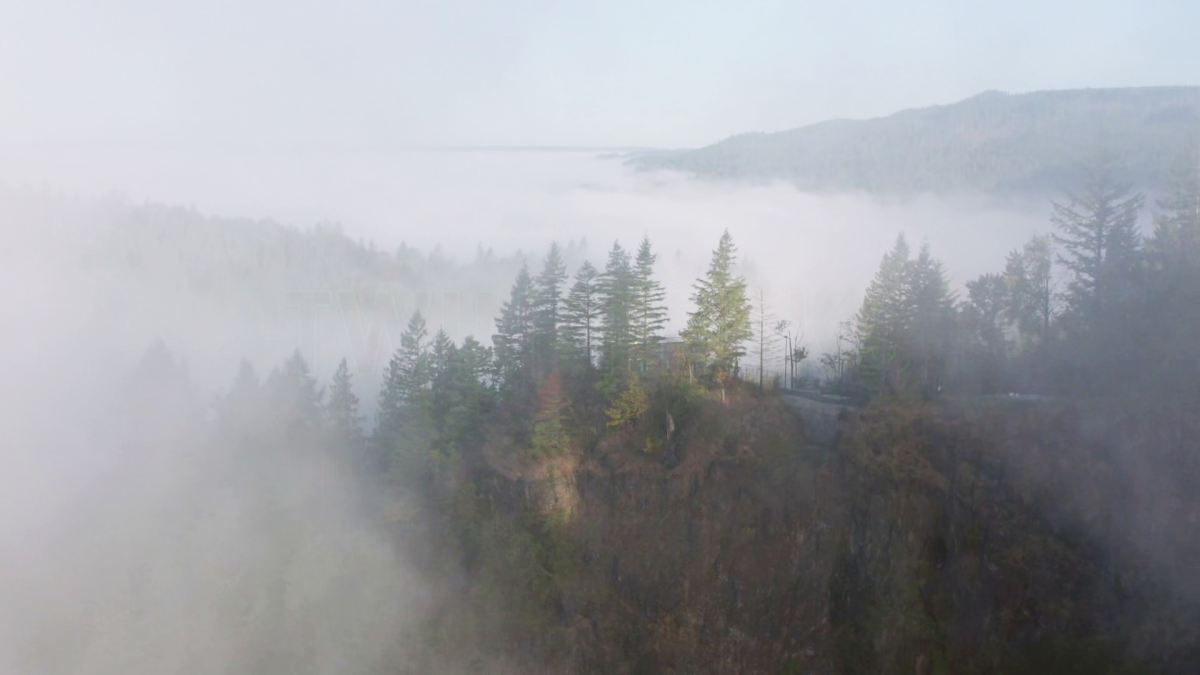
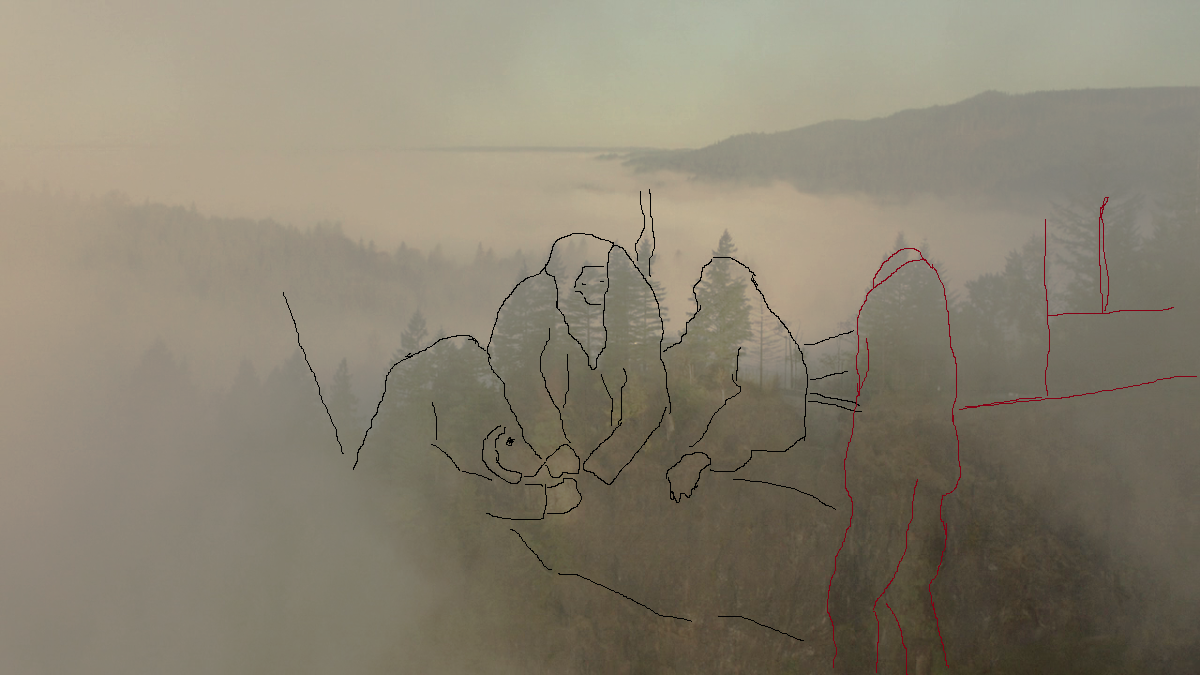
It is indeed a central moment in the story of Twin Peaks since it depicts the death of Cooper’s doppelgänger (as well as that of BOB). It makes sense to “engrave” such a moment in the forest surrounding the town, to transform these characters into giants of rock and trees. Such a superimposition confers a mythological feel to Cooper’s victory over his double.
On the other hand, one will note that Cooper’s head is missing, lost in the clouds floating above the forest. Perhaps this victory was not as complete as one might have hoped. In my forthcoming analysis of episode 18 I’ll explore where that head in the clouds might have gone.
Speaking of superimpositions, the most notable in this episode is the one with Dale Cooper’s face that takes place in the Sheriff Station. The superimposition appears right after he’s noted the presence of Naido in the room, which seems to generate a reminiscence for him. All of the sudden, his mood changes and it becomes evident that he is troubled. He realizes the dream-like nature of what is taking place, the fact that levels of reality are in a sense similar to the stuff dreams are made of.
If the past does indeed dictate the future, his effort to change the destiny of Laura Palmer is going to modify this timeline, leading to major changes in the way things are, wiping this reality away as a (mosly) bad dream. But of course, he does not really succeed in saving her, she disappears in the forest as he is about to bring her back to her mother. She does not get killed by her father or wrapped in plastic, but she evaporates into thin air, to a different level of reality where Cooper will travel in the next episode.
The moment when Laura disappears is reminiscent of the one in episode 7 when Jerry Horne appears lost in those same woods. Did he get lost in the same place? Could he somehow feel this thanks to shamanistic powers developed through absorption of various psychedelic drugs? Though he appeared to be totally lost during most of the season, he might have been closer to the truth than a lot of the “normal” residents of Twin Peaks. The psychedelic drugs may have broadened his mind to a higher frequency of consciousness, enabling him to received waves of a stronger nature than the radio ones he was unable to receive via his cell phone.
Never more than in this episode have Mr. C and BOB been depicted as dangerous animals, a werewolf/Big Bad Wolf ready to devour whatever stands in their way. This is the reason why they are trapped in a cage when teleported to the Purple Palace. This is also why Lynch insists so much on the hair of Mr. C, his true face – that of a wild animal.
This Purple Palace, as it was already made clear a few episodes again, is reached via a clearing in the forest, as one gains access to the Lodges. The difference is that the pool in the grove in not filled with scorched oil, as in Glastonburry Grove, but with a golden liquid. And contrary to the former and its 12 sycamore trees (12 being a number that indicates the possibility of regeneration towards a higher-consciousness), there is just one here (the primal force), a white one. Unity and gold, the alchemical symbols that have played such a crucial role in season 3.
In the Purple Palace, one can notice on top of one of the doors a motif that resembles the strange ace of spades drawn on Mr. C’s playing card, which I have compared in a previous post to a flying egg.
If I am right and the sound heard at the very beginning of episode 1, played to Cooper by the Fireman with a phonograph, is indeed the sound of a goose, the fact that it is played at the exact moment when Laura’s hand leaves Dale’s in the forest might be the sign that mother goose called back her duckling to stay within the universe-egg. Dale was indeed about to break that shell in order to create a new time line, but in this multiverse, composed of numerous bubble/eggshell worlds, it is not so easy after all to change things.
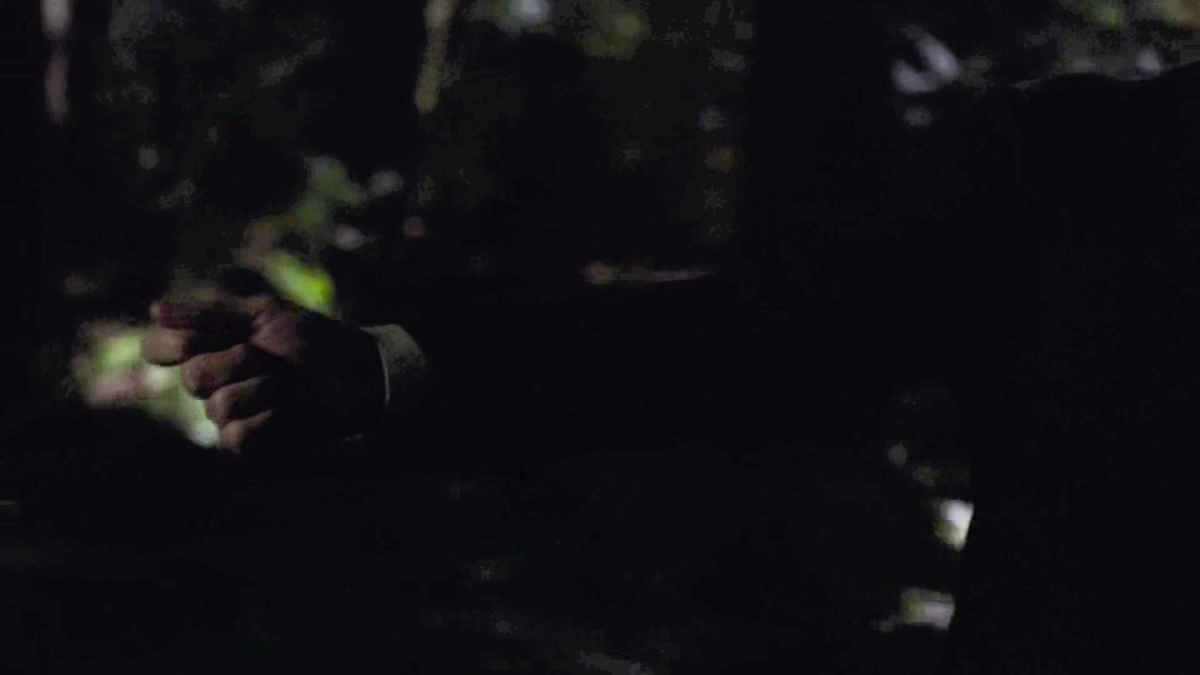
One slightly disappointing element of episode 17 for me was the revelation that Naido was in fact Diane under a Red Room disguise. I believe this choice is going to give fuel to the people who claim that Twin Peaks is guilty of “orientalism” because Naido was portrayed by a Japanese actress (and it is a Japanese word), while Diane was consistently depicted during season 3 wearing Chinese clothes and collecting Chinese art in her flat. If this was a choice on the part of Lynch and Frost, it was something of a mistake I think – and if they were not aware of the difference, that is even worse.
Concerning the sequence with Philip Jeffries as a tea-pot (hello Lewis Carroll!), the transformaton of the owl sign into a moebius strip makes perfect sense because of the cyclical nature of Time in Twin Peaks. I discuss this subject at great length in my book Twin Peaks: Unwrapping the Plastic, notably concerning the opening credits of the first two seasons. Twin Peaks appears to exist outside of our world, in a mythological realm where time does not flow the way it does in our universe. Inhabited by various godly deities, connected to Tibet and other mystical realms, it functions according to other laws. Like with Lost Highway, the question “is it the future or is it the past?” does not entirely make sense.
Was this Return a return in Space or a return in Time? Is it possible to disconnect one from the other? What does it mean to go back to Twin Peaks if one does not get there at the right time? Those are, among others, some of the questions asked in episode 18.
